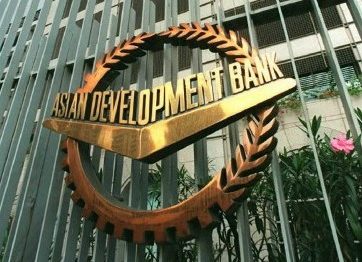ADB OKs $100-M loan to help speed up PH infra rollout

Asian Development Bank (ADB). (File photo from AFP)
To fast-track the rollout of flagship infrastructure projects under the government’s “Build, Build, Build” program, the Asian Development Bank is extending a $100-million loan to the Philippines for its Infrastructure Preparation and Innovation Facility (IPIF), the Manila-based multilateral lender said Monday.
In a statement, the ADB said its board of directors approved the bulk of financing for the IPIF, the lender’s first-ever technical assistance loan extended to the Philippine government, which will primarily assist two implementing agencies, namely the departments of Public Works and Highways as well as of Transportation, in preparing infrastructure projects using global best practices.
“The new loan, along with the recently approved $5-million technical assistance grant, serves as a catalyst for the government’s project management and monitoring system. It will strengthen the government’s project facilitation and monitoring systems, reduce infrastructure bottlenecks, and help relevant agencies systematically monitor project progress and address operational issues at every stage of project planning, construction, and operation,” the ADB said.
The government will contribute $64.06 million for the $164.06-million IPIF, which was targeted for completion by the second quarter of 2021, the ADB added.
Richard Bolt, ADB country director for the Philippines, told reporters in a press briefing that the IPIF is expected to support the preparation of $3.8 billion in public infrastructure, including new airports, ports, railways, roads and bridges as well flood control projects.
These infrastructure investments will add up to $10 billion to the economy from 2019 until 2024, he said.
“The flagship infrastructure projects under the ‘Build, Build, Build’ program will spur economic growth and improve people’s living standards. Better infrastructure will lower the cost of doing business, shorten travel times, and usher in more economic opportunities in remote areas. It will also make it easier for people to access education, healthcare, and other social services,” Bolt said in a statement.
“We look forward to working with the government to develop a timely, high-quality project preparation process for effective, innovative infrastructure projects in the Philippines,” Bolt added.
According to Bolt, the government is on the right track in addressing infrastructure concerns to boost economic growth.
Aekapol Chongvilaivan, ADB’s country economist for the Philippines, said among the flagship infrastructure projects in the pipeline whose preparation will be financed by the IPIF include the Davao-DIgas segment of the Mindanao Railway, the Philippine National Railways-South Line’s commuter and long-haul segments, Laguna Lakeshore Road Network, as well as Northeastern Luzon Expressway, among other “quite sophisticated” transport facilities, roads and bridges mostly outside Metro Manila.
The Duterte administration early this year unveiled the “Build, Build, Build” program aimed at ushering in “the golden age of infrastructure” after years of neglect.
Under “Build, Build, Build,” the government would rollout 75 flagship, “game-changing” projects, with about half targeted to be finished within President Duterte’s term, alongside plans to spend a total of up to P9 trillion on hard and modern infrastructure until 2022.